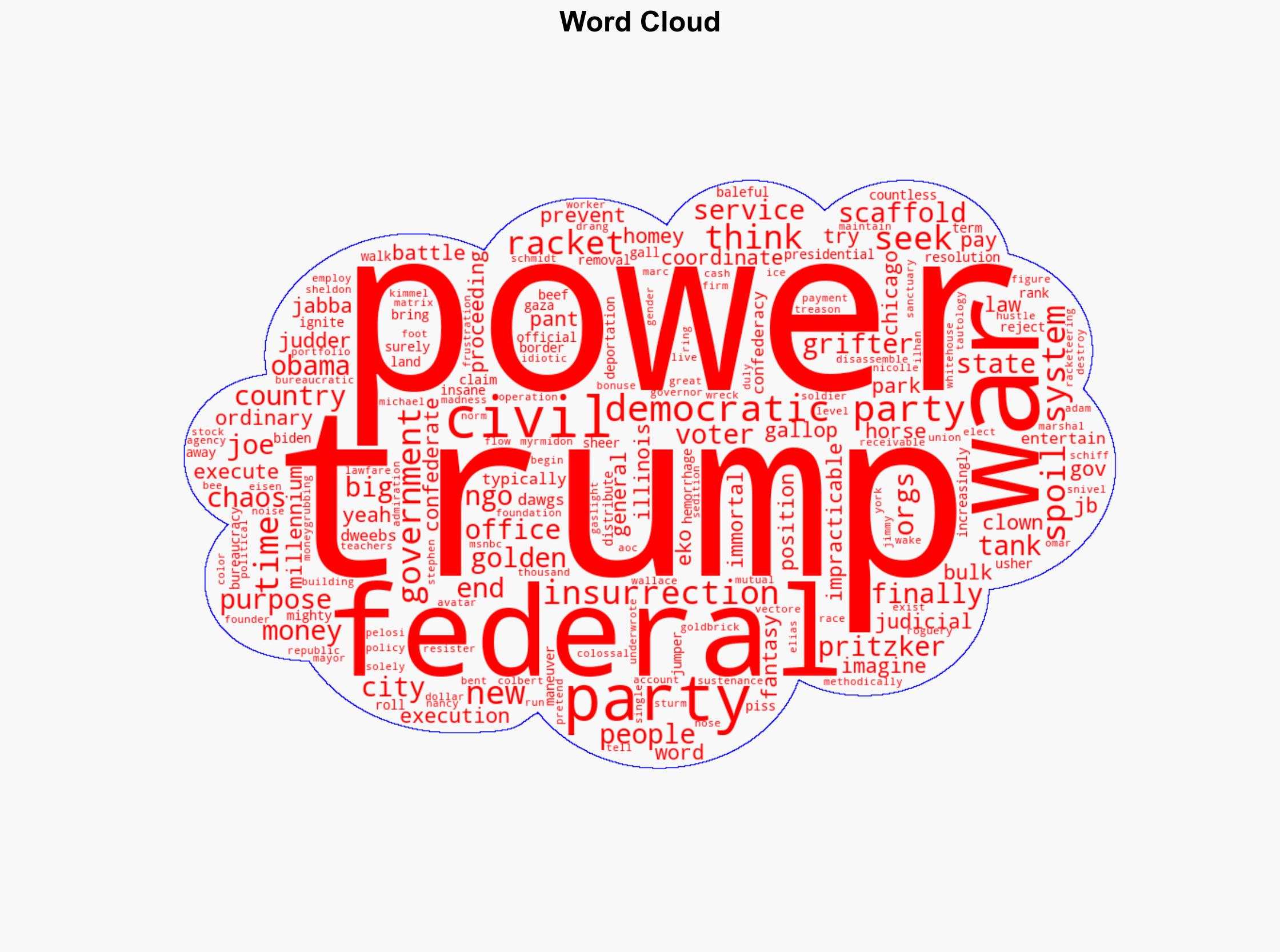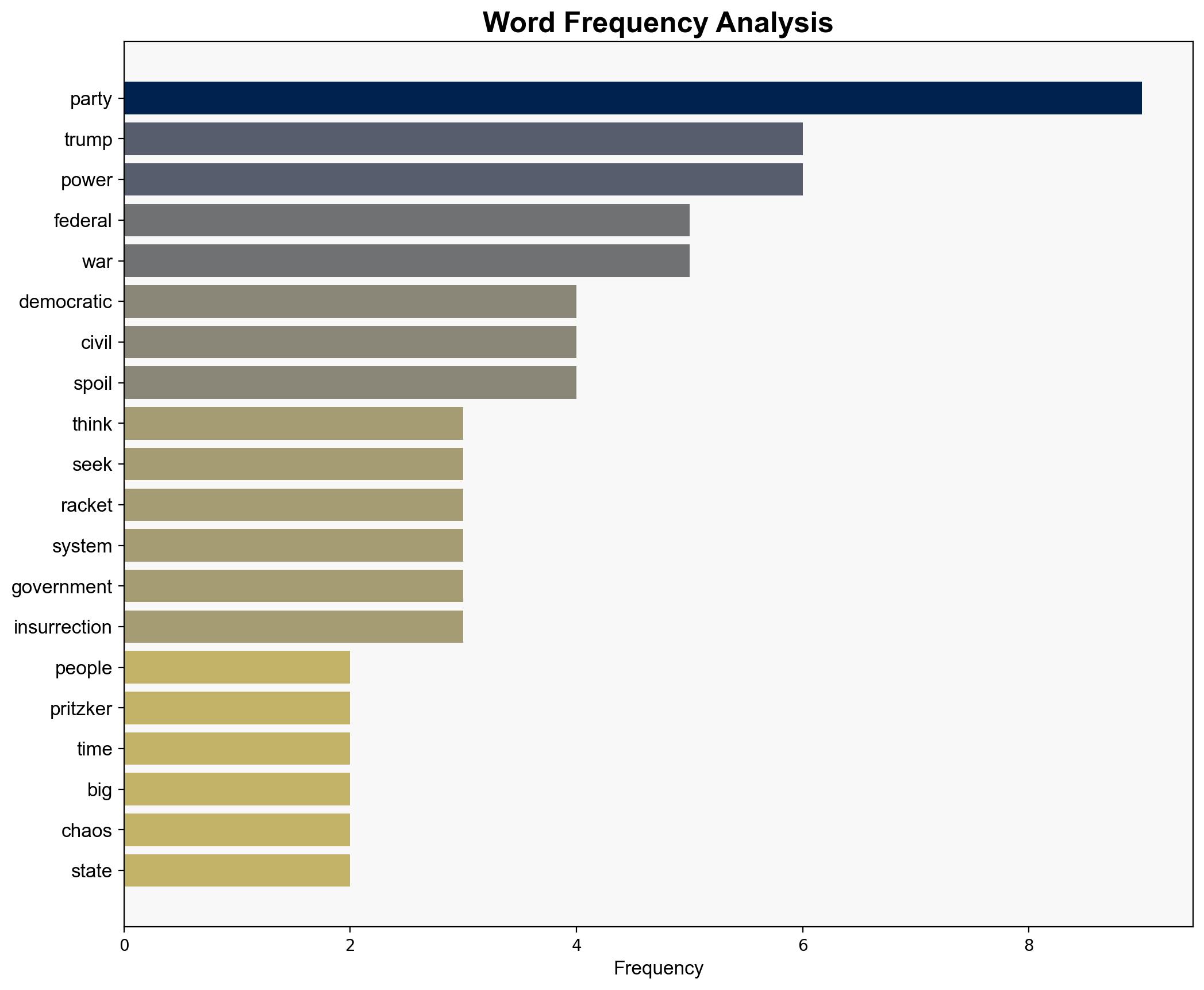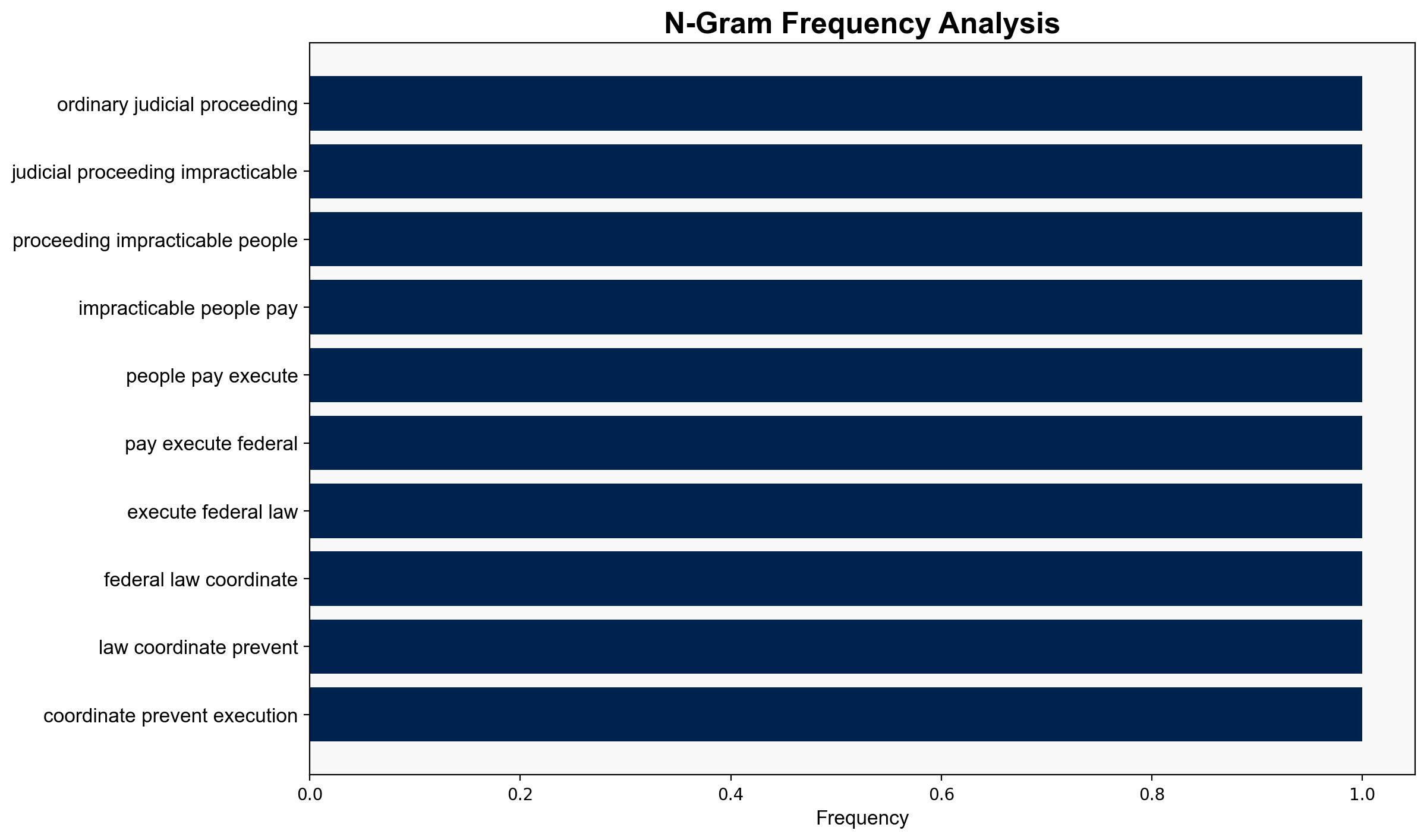What is Power For – Activistpost.com
Published on: 2025-10-16
Intelligence Report: What is Power For – Activistpost.com
1. BLUF (Bottom Line Up Front)
The most supported hypothesis is that the narrative in the source text reflects a deep-seated belief in a systemic power struggle within U.S. politics, characterized by a perceived existential threat to democratic structures from within. Confidence level is moderate due to the speculative nature of the claims. Recommended action is to monitor for any tangible actions or rhetoric that may escalate tensions or incite violence.
2. Competing Hypotheses
1. **Hypothesis A**: The article represents a genuine concern about a perceived internal threat to U.S. democracy, suggesting that certain political figures and entities are engaged in a coordinated effort to undermine democratic institutions for personal gain.
2. **Hypothesis B**: The article is a hyperbolic narrative intended to mobilize a specific political base by exaggerating threats and creating a sense of urgency, without substantial evidence of an organized conspiracy.
Using the Analysis of Competing Hypotheses (ACH) 2.0, Hypothesis A is better supported by the text’s detailed accusations against specific individuals and entities, suggesting a belief in a deliberate and coordinated effort. However, Hypothesis B cannot be dismissed due to the lack of concrete evidence and the use of inflammatory language.
3. Key Assumptions and Red Flags
– **Assumptions**: The narrative assumes that political figures are acting with malicious intent and that there is a unified effort to destabilize the government.
– **Red Flags**: The lack of verifiable evidence and reliance on speculative language are significant red flags. The text’s emotional tone may indicate bias or an attempt to manipulate perception.
– **Blind Spots**: The article does not address counterarguments or alternative explanations for the political dynamics it describes.
4. Implications and Strategic Risks
– **Patterns**: The narrative fits into a broader pattern of increasing polarization and distrust in political institutions.
– **Cascading Threats**: If such narratives gain traction, they could lead to increased political violence, erosion of public trust, and challenges to governance.
– **Potential Escalation**: The rhetoric could incite individuals or groups to take drastic actions, believing they are defending democracy.
5. Recommendations and Outlook
- Monitor social media and other communication channels for signs of mobilization or calls to action based on similar narratives.
- Engage in strategic communication to counter misinformation and promote factual discourse.
- Scenario Projections:
- **Best Case**: The narrative is dismissed as hyperbole, and political discourse returns to a more fact-based approach.
- **Worst Case**: The narrative leads to widespread unrest and challenges to democratic processes.
- **Most Likely**: The narrative contributes to ongoing polarization but does not result in immediate large-scale violence.
6. Key Individuals and Entities
– Donald Trump
– Joe Biden
– Barack Obama
– Nancy Pelosi
– AOC (Alexandria Ocasio-Cortez)
– Ilhan Omar
– Sheldon Whitehouse
– Adam Schiff
– Norm Eisen
– Marc Elias
– Michael Schmidt
– Nicolle Wallace
7. Thematic Tags
national security threats, cybersecurity, counter-terrorism, regional focus





